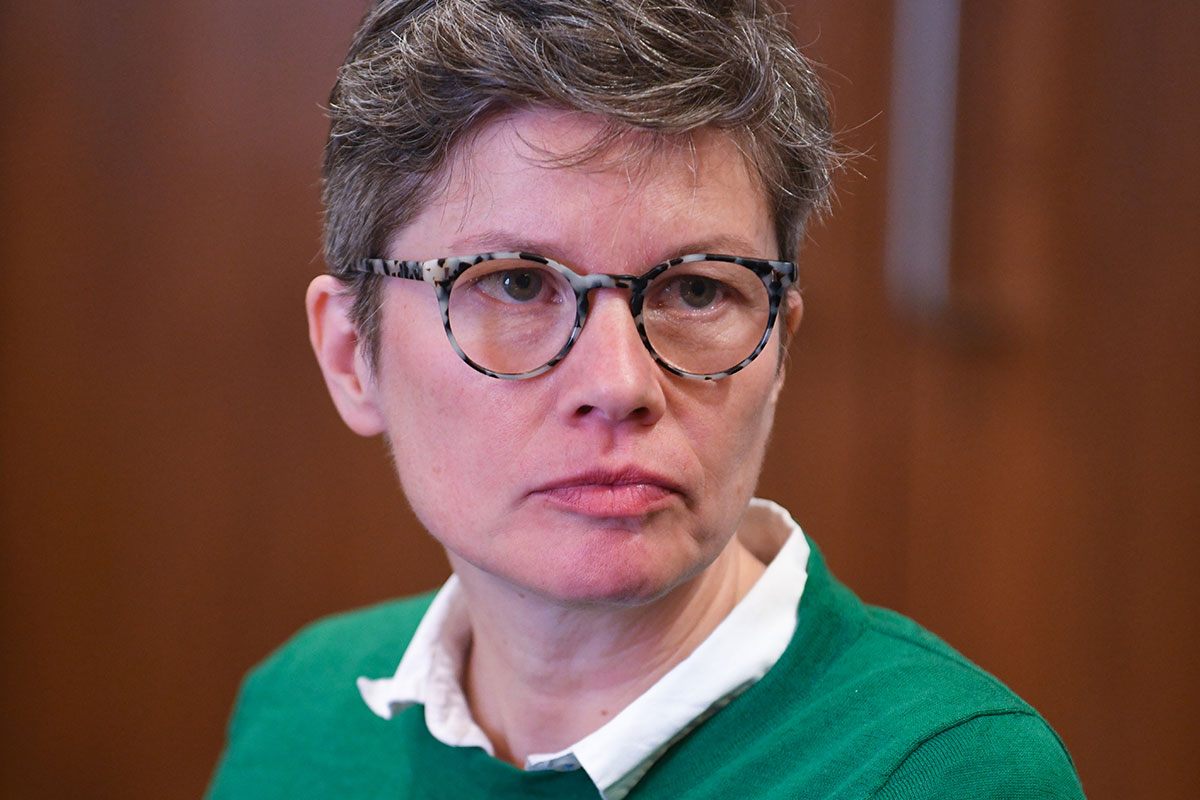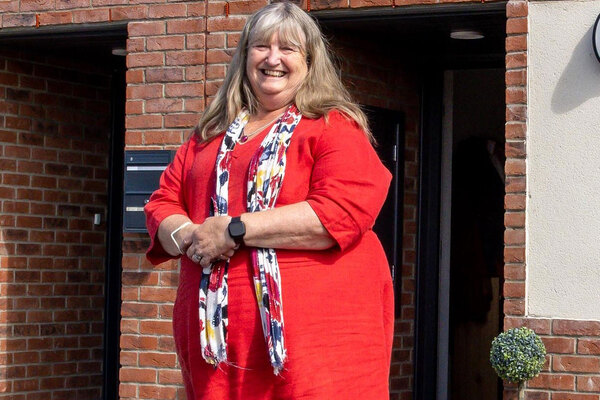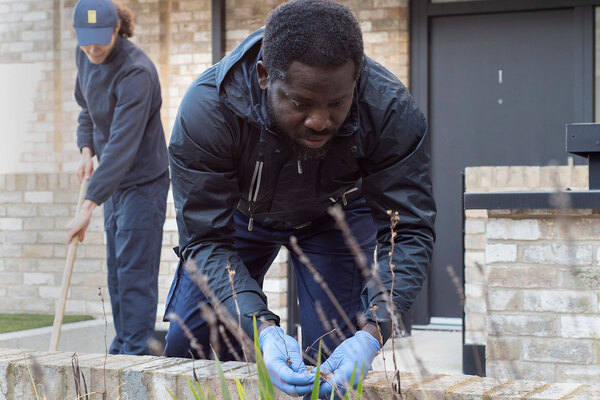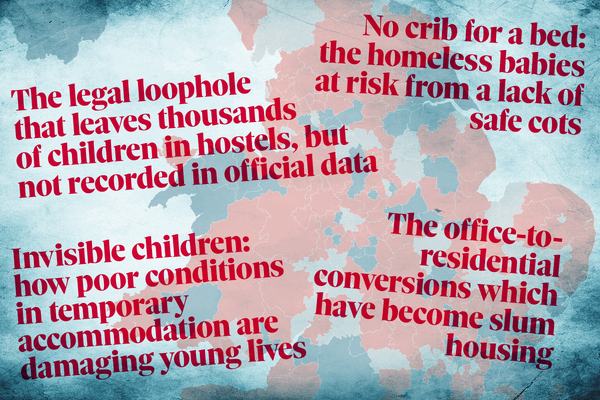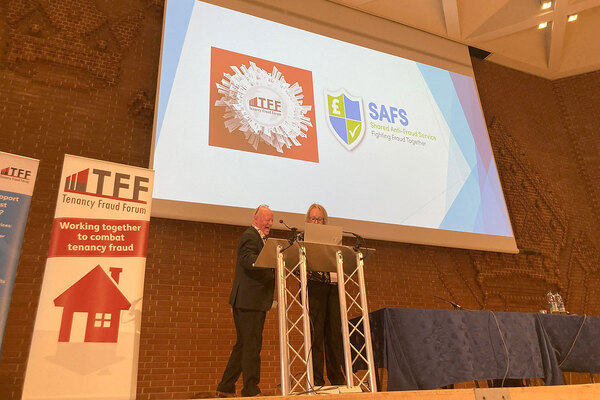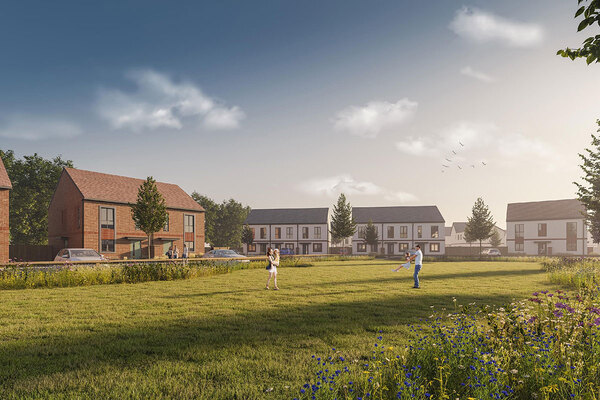The Future Homes Standard: evaluating how the sector is working towards targets
Development experts attended a roundtable organised by Inside Housing and H+H to discuss progress on meeting criteria set by the Future Homes Standard
In association with:

It is the morning of the Inside Housing Development Awards and a panel of entrants and judges have gathered for a roundtable. The subject up for discussion: what the affordable housing sector already knows about how best to meet the Future Homes Standard (FHS), and what more remains to be done. There is a sense of positivity, because the discussion quickly reveals a fair amount that falls into the ‘existing knowledge’ category.
The FHS requires, from 2025, every new home in England to produce 75% to 80% less carbon emissions than those currently being built. A stepping stone to that target came into place earlier this year, with homes built from June 2022 required to deliver 31% less carbon emissions than necessary under previous regulations.
“Generally what we’ve found, talking to a lot of clients, is that they seem to be going directly to the Future Homes Standard [meaning they are skipping to the 75-80% cut] rather than working to what we’ve got at the moment,” says John Churchett, director of building solutions at aircrete product manufacturer H+H, which is supporting today’s event.
In short, the technology is there: the insulated building fabric, heating and ventilation systems needed to meet the standard are well known. The only remaining question is quite which combination of approaches works best – but work is under way there.
Project 80 is a research and development programme being run by Midland Heart and Birmingham City University. Tony Hopkin, head of construction, quality and innovation at Midland Heart, explains that the association is testing possible models for meeting the standard. Two housing schemes have already been completed as part of it.
“We’ve initially gone for a traditional construction approach, so masonry construction, and we’ve modelled different specifications – so three different house types, three different specifications,” Mr Hopkin explains. As well as the fabric solutions, four different heating and hot water solutions are being tested.
Head 100 miles east, and there is an organisation for which low carbon increasingly feels like business as usual.
“We now feel we’ve gone beyond the experimental stage. We know we’ve got a really good fabric-first approach to building,” says Craig Sparrow, executive director of development at ClwydAlyn in North Wales. “We know the technologies that we like and that work, and we know what the residents like. All of our schemes, if they’re not ultra-low carbon, are already EPC [Energy Performance Certificate Band] A, off gas.”
Legal & General Modular Homes is another organisation for which pilots are a thing of the past. “We’ve moved past them because, fundamentally, a lot of these technologies are already proven,” says Rosie Toogood, the company’s chief executive.
People power
On the face of it, there is a feeling that the affordable housing sector is well placed on low-carbon homes. But this does not take into account a key factor – one that will become the central point of discussion for this event. Dr Rehan Khodabuccus, operations director at modular homes firm Zed Pods, sums it up in memorable fashion.
“Weird and wonderful things happen to design and engineering models when you start putting people in,” he says. “As designers and developers, we need to appreciate that the handover [of a low-carbon home] doesn’t stop when you hand over the keys. There’s another stage, of helping people through an educational process. It’s really important if you want the buildings to perform as they’re designed.”
In some instances, that process will involve persuading people to abandon habits and beliefs they may have had their whole lives. “I open my windows every day, because that’s what I’ve always done since I was a young girl,” says Jenny Buterchi, partner at architecture practice PRP. “[For these new homes] it’s ‘don’t open your windows in the middle of winter because you’re going to mess up the ventilation’. We’re expecting people to make this huge leap.”
What that means is that simply explaining how, for instance, a new heating system should work is not enough to give every resident the confidence to use it in that way. A case in point: a Passivhaus-type scheme by Origin Housing, a housing association operating in London and Hertfordshire. When properties were handed over, residents were given detailed information on keeping the heating and the ventilation fan on.
“It was all gone through in detail, but when we did the post-monitoring, there was more than a 500% difference between the lowest energy use and the highest use,” says Gareth Jones, development director at Origin.
Data from Midland Heart’s Project 80 shows something similar. “We’ve found that some people are using air source heat pumps in a similar way to gas boilers,” says Mr Hopkin. “You can see from the energy use patterns that they turn it off and on. That shows there is a need for further education for our residents… and to reassure them that by leaving it on, it costs them less than turning it on and off.”
There may be another solution alongside education: making things simpler. In homes built by Beattie Passive, there has been a deliberate decision to make everything straightforward. “Everybody presses buttons,” says Ron Beattie, the company’s managing director. “So take those buttons away. MVHR [mechanical ventilation with heat recovery] is designed to run all the time – and has only a boost button and an alarm. Simplicity is the way.”
It is not only residents who will need education and support as low-carbon homes become more common. It is also staff at social landlords. Claire Flowers, head of the Housing Development Agency at Cambridge City Council, says: “You can spend all this money trying to do the right thing, but how you give information to residents and the maintenance team over the long term is really important.”
Clive Pridgeon, head of construction services at Longhurst Group, agrees. “It’s very important to look at the whole picture [with low-carbon homes]: installation, design, design standards, everything. But also to look at the end product, look at the 30, 40-year plan. How are you going to look after it? What’s the impact on service and maintenance?” he says.
Brighton & Hove City Council is about to launch a new housing scheme – the first to use ground source heat pumps. “Local authority M&E [mechanical and electrical maintenance] teams have been used to working with traditional heating systems, and gas, and gas compliance,” says Jo Thompson, the council’s regeneration programme manager.
There is a recognition that many of these staff members will need support through the change in technology. But there is also a recognition that many of them are now reaching retirement age. That means education of existing employees needs to be coupled with recruitment of new ones – but that is a problem.
“We are having trouble recruiting the younger people who are technically qualified to be our M&E people of the future,” Ms Thompson says.
For Nick Taylor-Williams, head of housing at Caerphilly County Borough Council, availability of workforce “is a challenge on every level within the housing sector”. Challenges with the cost of living mean, he says, that colleagues are increasingly considering whether they may be able to earn more elsewhere.
It is a worry for architecture practices, too. Martyn Few, who leads the residential section at Ridge and Partners, explains that he has just lost a ‘part two’ colleague – the second stage of qualifying to be an architect – to a house builder “because the money was better, he got a car, all those extra bits. We’re really in a worry of losing architectural staff”.
This lack of workforce, across all parts of the sector, may affect the ease with which low-carbon homes can be built. The workforce is a foundation of delivery.
What about the other foundations that will need to be in place if the sector is to meet the Future Homes Standard with consistency and relative ease? One of our panellists has a specific possible foundation in mind: the planning system.
Sarah Allan, head of architecture at the Department for Levelling Up, Housing and Communities, says: “There is lots of planning policy, and my question is how useful do you find planning as a motivator for change?”
Robbie Erbmann, assistant director for housing at Haringey Council, says: “I think planning policy is really important. If you look at what’s going on in London compared to some of the rest of the country, that’s because the policy in the London Plan is different.” Any developer that wishes to use City Hall funds for affordable housing has to commit to environmental standards, including making all developments of more than 10 homes net zero carbon and air quality neutral.
That said, there are concerns about how well planning regulations generally are aligned to this agenda. Ms Buterchi reports that “if you’ve got a site at any sort of sensitive location and you’re doing landscape or townscape vision impact assessments”, getting approval for solar panels is exceedingly difficult.
The ins and outs may be complicated. But the sense of optimism with which the debate began remains evident. As Neill Campbell, partner at architectural practice BPTW, puts it: “If you wind back a year-and-a-half or two years, we’ve come an enormous way [on this agenda]. I think two years ago, we were designing for now. I think now we’re designing for the future.”
Participants
Martin Hilditch (chair)
Editor, Inside Housing
Sarah Allan
Head of architecture, Department for Levelling Up, Housing and Communities
Ron Beattie
Managing director, Beattie Passive
Jenny Buterchi
Partner, PRP
Neill Campbell
Partner, BPTW
John Churchett
Director of building solutions, H+H
Robbie Erbmann
Assistant director for housing, Haringey Council
Martyn Few
Partner, Ridge and Partners
Claire Flowers
Head of Housing Development Agency, Cambridge City Council
Tony Hopkin
Head of construction, quality and innovation, Midland Heart
Gareth Jones
Development director, Origin Housing
Dr Rehan Khodabuccus
Operations director, Zed Pods
Clive Pridgeon
Head of construction services, Longhurst Group
Craig Sparrow
Executive director of development, ClwydAlyn
Nick Taylor-Williams
Head of housing, Caerphilly County Borough Council
Jo Thompson
Regeneration programme manager, Brighton & Hove City Council
Rosie Toogood
Chief executive, Legal & General Modular Homes
Sign up for our development and finance newsletter
Already have an account? Click here to manage your newsletters






